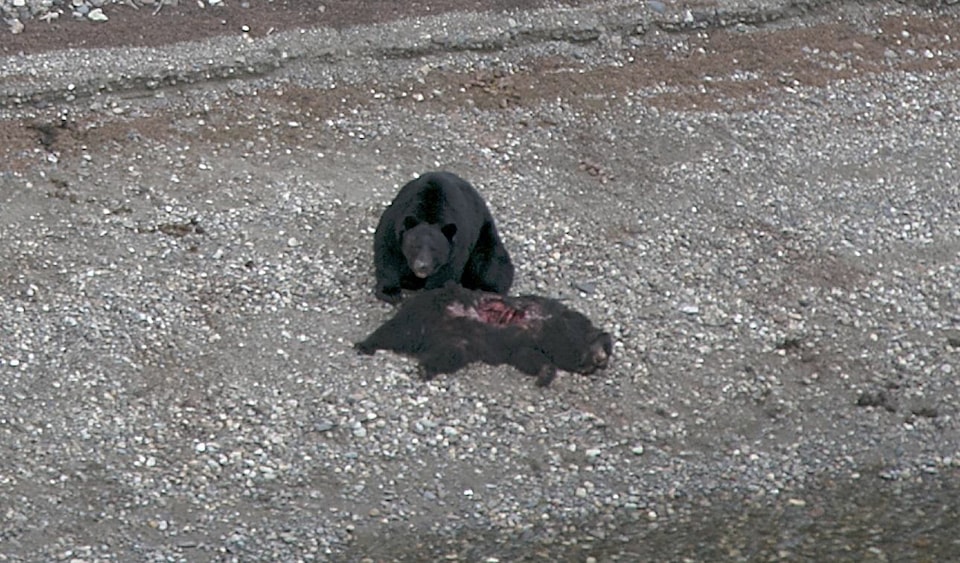Cheslatta Carrier Nation (CCN) Chief Corrina Leween and senior policy advisor Mike Robertson came across an unexpected sight this week while touring wildfire-affected areas south of Burns Lake.
From their helicopter they spotted a black bear eating another bear’s carcass on the north shore of Cheslatta Lake.
“We all thought they were dead and circled back to investigate,” described Robertson. “When the helicopter got closer, we discovered a huge black bear on top of a brown bear.”
“The big black bear got up and walked about 10 yards, quickly turned around and in a very aggressive and threatening manner started clicking his teeth,” he continued. “The bear took a step or two towards us, even though we were 100 feet high in a whirling helicopter.”
“It sent chills through my bones.”
Robertson said the bear ran away when the helicopter circled the area again, but that it eventually went back to his meal.
“None of us have ever heard of a bear killing and eating another bear,” he added. “You can see they must have had quite a fight as the shoreline gravel around the carcass is stirred up and bloody.”
According to Sergeant Kevin Nixon with the B.C. Conservation Officer Service, however, this is not unusual behaviour for bears.
He said bears will often attack each other and eat each other’s carcasses.
“Grizzly bears for starters will kill a black bear any opportunity they get and they’ll consume it,” he told Black Press. “For a large male black bear to kill another black bear, especially a younger male, he’ll go out of his way to do that.”
“They’ll do that for breeding purposes, to remove competition, and once it’s dead they’ll consume it,” he added.
When asked if bears in the Burns Lake area have been affected by the region’s wildfires, he said “definitely.”
“Bears are very territorial, and the fact they have been displaced by the fires means that they have to establish a new territory,” he explained. “As soon as they have to establish a new territory they have to compete with bears that were already in that territory, and that’s when fights are going to occur.”
Nixon added that this is the time of year when bears are feeding 18 hours a day, trying to get their last-minute calories before they go into hibernation.
“There’s only so many food sources available, so they’re gonna turn to whatever food sources they can find, and the unfortunate reality in this area is that bears are finding pet food, apple trees and all kinds of different things that are not considered normal bear behaviour.”
READ MORE: “Unusual” bear attack south of Burns Lake
@flavio_nienow
flavionienow@gmail.com
Like us on Facebook and follow us on Twitter.
